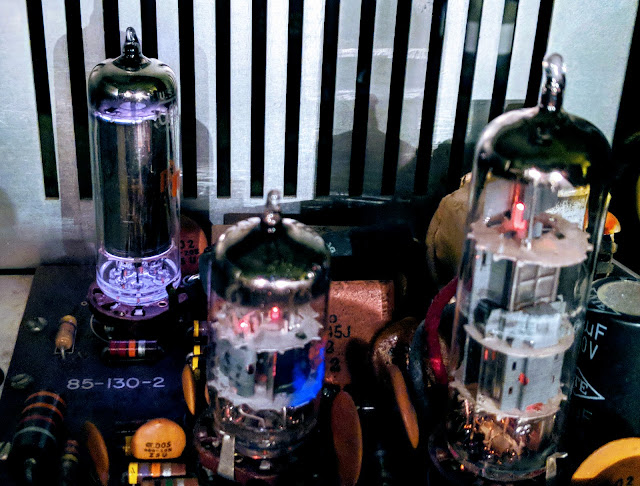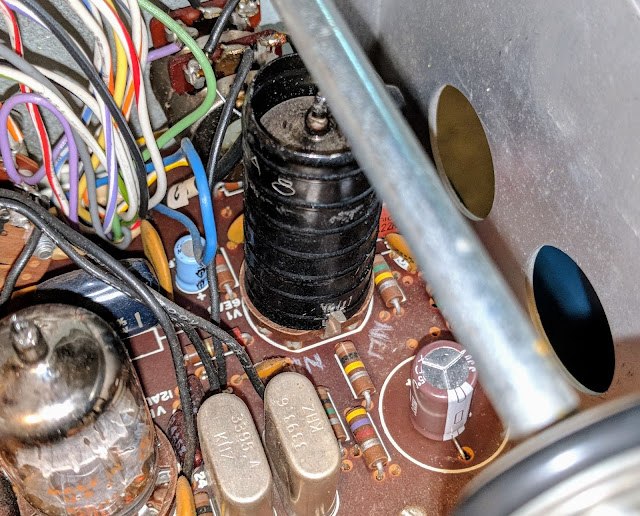 Feeling gassy
Feeling gassy
Ionization is a beautiful thing
A reader asked me to video the pulsing of the OA2 voltage regulator tube in action.
 |
| OA2 VR tube glowing beautifully in back corner |
I turned the room lights down to capture the OA2 in its glowing gas glory and noticed a problem with the V15 6EA8 tube that creates the sidetone oscillation and Vox control. A patch inside was glowing a brilliant violet color when the CW switch was engaged. Glowing gas inside a gas filled tube is pretty but glowing gas inside a vacuum tube is a no-no. I've noticed my sidetone volume (which is unadjustable) going a bit soft over the past week and now I understand why. The vacuum tube has developed a leak and has "air" inside. That "air" is mostly nitrogen which ionizes with this brilliant violet color.
 |
| Tbis 6EA8 should not be glowing violet |
Lots of flatulent tubes
After I saw that I started looking and noticed I also have an 12AX7 beginning to go gassy as well so I ordered some new tubes from www.findatube.com
So let's keep the gases where they belong.
Solved a bit of a mystery tonight
I had a problem that I've just tracked down. Most boat anchor guys would probably already have known how to solve this but it a new discovery for me.
My audio was occasionally scratchy with a bit of popping. Sometimes when working CW the other stations signal would jump around slightly in frequency, like 20Hz - 50Hz.
I'd already re-seated most of the tubes, re-tightened screws, DeOxit'd switches, etc.
Then I noticed that V1's tube shield was not bonded to the tube socket finger thingy (sorry don't know what it's called). The other tube shields were soldered and I hadn't noticed that this tube shield was new and looking at the socket spring thing appears it had never been soldered. After pulling that tube and its shield I scraped the paint from the shield where the socket spring presses onto it and cleaned the socket spring as well. Apparently those tubes leak RF and the tube shields catch the stray signals and send them to ground. Without proper bonding the tube is spraying RF around.
That turned out the be the problem, now all is good. Received signals are rock steady and the audio is very clean.
 |
| Tube shield needed to be grounded to the socket spring |
This problem had been periodic and was driving me a little nuts. I'd read that grounding the tube shields was important but somehow I'd missed that this shield was not properly bonded to the finger thingy.
On the positive side, I am growing a tube collection by purchasing replacements that are not needed :)
That's all for now
So lower your atmospheric pressure and raise your B+ voltage
Richard AA4OO













